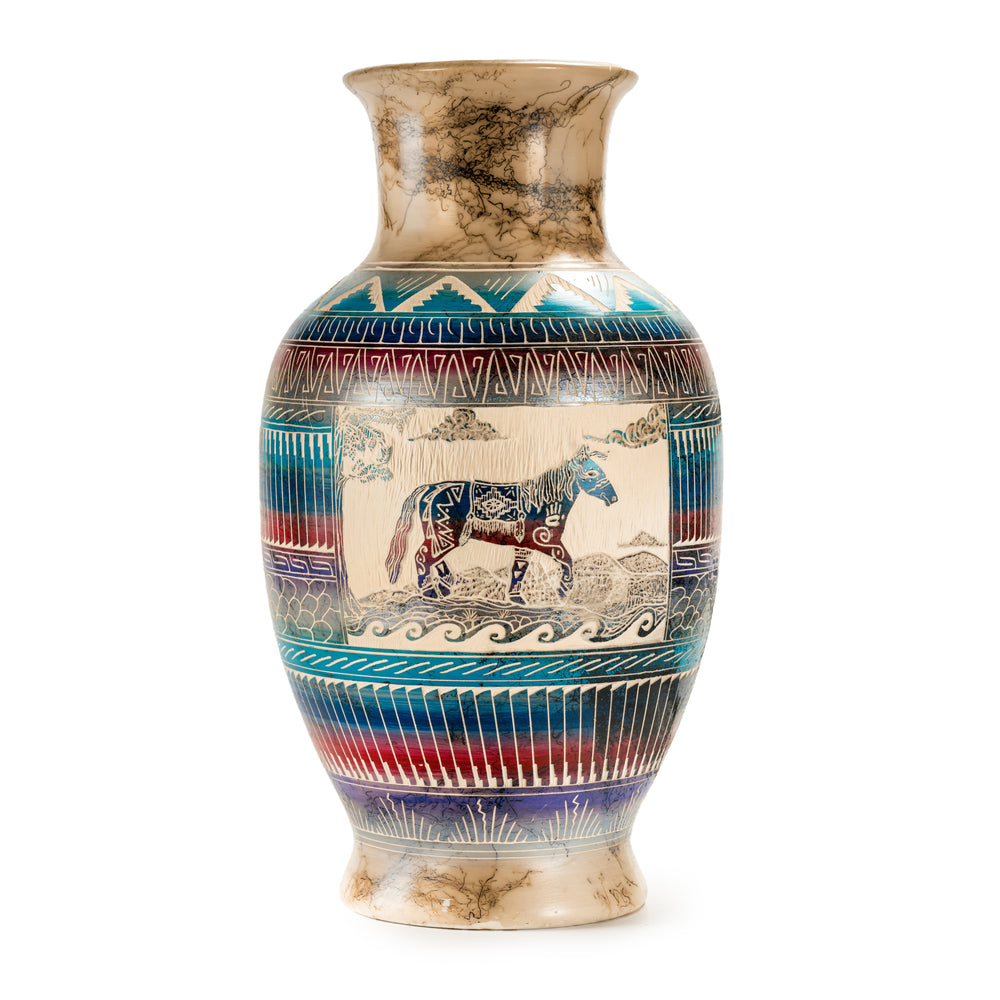Horsehair Navajo Pottery
- Free returns
- Low stock - 1 item left
- In stock
Horse hair from the mane is thrown onto the pottery while it is still very hot during the firing process. The hair burns when it touches the hot pottery, leaving a carbon stain cooked into the pottery. This makes each piece one-of-a-kind with its own unique, beautiful pattern.
The Horse came from the Sun and Earth. A companion on the hunt burden bearer, friend of The People. The horse is believed to possess the power of healing.
The Stair Case of Life represents Mountains and symbolizes the different stages and steps we take in life. We learn to overcome obstacles which life has to offer.
Cedar Trees represents the Medicine Tree used for many ceremonies. It helps us on our life journey with patience, courage, and wisdom.
Prayer Feathers hold and carries all your dreams and prayers. The eagle itself is a very sacred bird to the Navajo tribe as well as other Native American Tribes.
The Whirlwind pattern shows a journey, sweeping out the old and opening the way for the new. It also gives inner peace, healing, and energy.
Rocks represent solidarity, to build a secure foundation for those around us.
River of Life represents the changes of course we must go through in life.
Yucca is used for herbal cleansing. The plant is used to make wedding baskets and other ceremonial pieces.
Corn represents the everlasting mother. She is the guardian and the pollen is offered in prayer for blessings.
8.5 x 17 inches
This Item is Not Eligible for Shipping and is Curbside Pickup Only from the Hermann Park Museum location in Houston.





